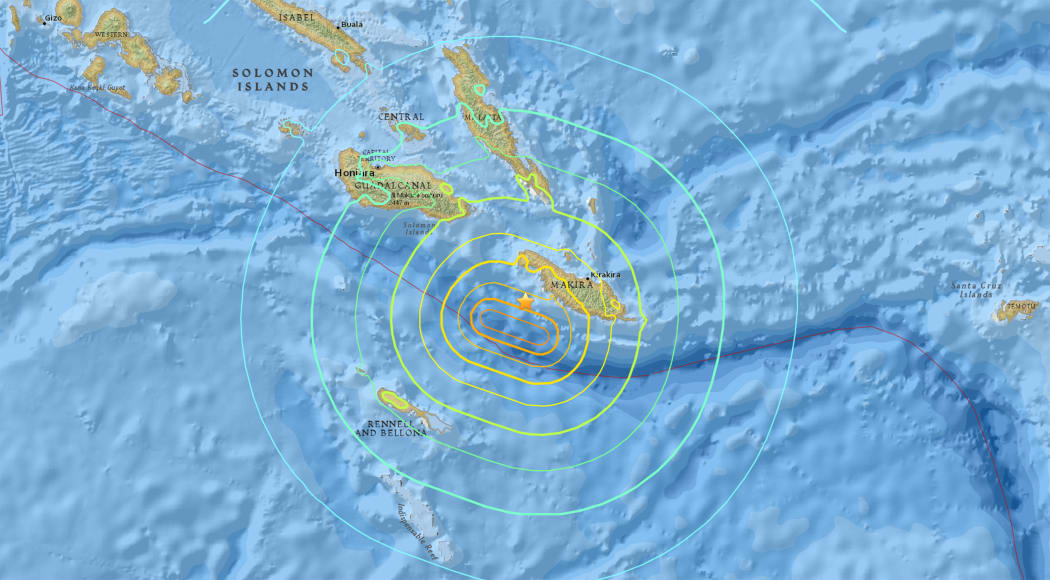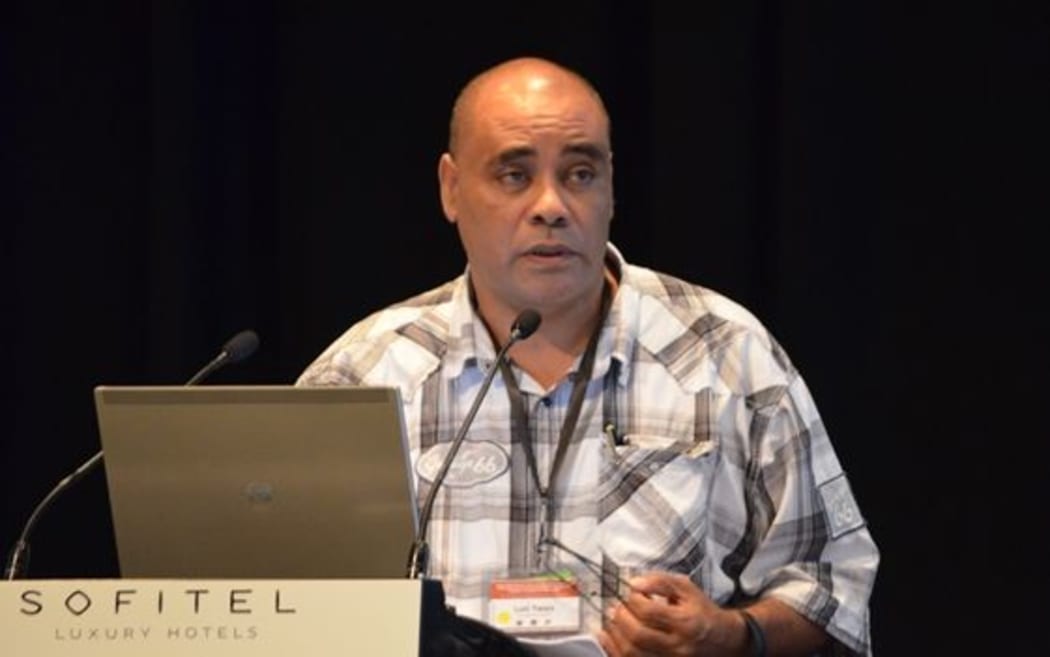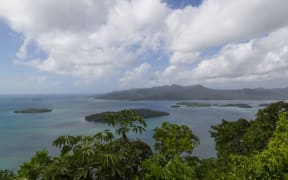The Pacific Tsunami Center says the tsunami threat following the 7.8 quake off Solomon Islands this morning has largely passed but some countries remain on alert.

Many countries remain on tsunami alert following a 7.8 magnitude earthquake off Solomon Islands. Photo: USGS
The Center issued warnings for Solomon Islands, Vanuatu, Papua New Guinea, Nauru, New Caledonia, Tuvalu and Kosrae in the Federated States of Micronesia.
Authorities in New Caledonia have ordered people on the east coast and in the Loyalty islands to move to higher ground.
The Center also said people near impacted coastal areas should stay alert and exercise normal caution near the sea.
American Samoa had issued a tsunami watch following the earthquake but that was later cancelled.
The #tsunami threat from the Solomon Islands #earthquake has now passed. #PTWC https://t.co/b6yWURQcxk
— NWS PTWC (@NWS_PTWC) December 8, 2016
The quake, which hit just about 4:30am local time on Friday morning 70 kilometres off Kirakira, capital of the Makira and Ulawa province in the country's south.
It was initially reported to be of magnitude 8 by the US Geological Service but downgraded shortly afterwards.
The National Disaster Management Office Solomon Islands said the southwest coast of Makira reported experiencing a tsunami following the quake and the Office has been trying to contact the affected areas.
It said communities on Makria's southwestern coast have confirmed that a tsunami reached the island and tsunami alerts have been broadcast around the country through the Solomon Islands Broadcasting Corporation.
The Office said regions which could be affected include Makira, parts of Santa Cruz, Temotu province and the weathercoast of Guadalcanal.
Its Director, Loti Yates, said his office is unsure about the impact of the quake at this stage as its still early in the country but they should have more information in the coming hours.

The Director of National Disaster Management Office, Loti Yates. Photo: SPREP
People in the capital Honiara and outlying regions to run for the hills with power cuts to some areas.
There are no reports of major damage but the police commander at Makira-Ulawa province, John Smith, said the quake caused real fear in his neighbourhood.
"It was quite a big earthquake and people were panicked because it happened when it was still quite dark and most of the people run to the hills."
I am thinking of all my friends in the Solomon, especially those on the beautiful island of Makira. Stay safe! https://t.co/fIqas0bcAb
— Chris Trott (@ChrisTrott) December 8, 2016
Residents are still on high alrert. There is a eerie calmness after the earthquake #SolomonIslands
— Jay Bartlett (@Hatanga) December 8, 2016
RNZ International's correspondent in Solomon Islands, Dorothy Wickham, said many people in Honiara are now starting to head home and those with businesses are checking their properties for damage.
"There's been no reported damage here that I'm aware of yet but I will take a ride around town a little later," she said.
"I spoke to the police in Kirakira about an hour after the quake and they said so far, no damage to permanent buildings but there have been reports of leaf thatched houses collapsing under the quake and a lot of people have fled into the hills because the epicentre was closer to Kirakira."
She said the quake lasted for a couple minutes but could be felt for awhile after.
"I was woken up by the house shaking badly and when I got up I was struggling to keep balance to," the first time I've felt one that strong on Guadalcanal.
Ms Wickham said radio services were still playing automated music at that time of the morning and there needs to be a better system for civil defence officials to communicate with residents as she only knew about the tsunami risk from the internet.
"The sad thing is there are no systems in some of the public places like the National Referral Hospital there was a bit of a panic attack there especially with the lights that went off because they're right on the shoreline. It caused a bit of panic among the patients and relatives who are looking after them."
Ms Wickham said the hospital is also next to the main highway and a tsunami would be disastrous for the hospital.
GNS science duty seismologist Geoff Kilgour said the quake was about 40km below the surface.
It appeared to be a reverse fault, where the land was pushed up, which is why tsunami waves may be generated.


